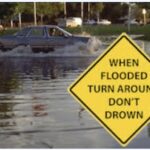Friday, April 04, 2025
USDA cuts hit schools, farmers and food banks. The lost funding and provisions hurt rural communities the most
 |
| Food bank reductions are tough for rural communities to replace. (Adobe Stock photo) |
In an effort to bring U.S. Department of Agriculture spending back to pre-pandemic times, the USDA terminated more that $1 billion in food support programing. The cuts are likely to leave a path of hungry Americans in their wake.
In early March, the USDA cut more than $1 billion in funding for the Local Food for Schools Cooperative Agreement and the Local Food Purchase Assistance Cooperative Agreement programs for 2025. “The money was designed to pay farmers to provide food to schools and food banks,” reports Jeanine Santucci of USA Today. “The abrupt cancellation of government funding for programs to help food banks distribute healthy, local food is being felt across the country, as some already strapped organizations turn to their local communities for help.”Both programs helped local growers boost their incomes while providing fresh food options to local schools and food banks.
Food banks were dealt another blow when the USDA announced it was halting or reducing deliveries from part of its Emergency Food Assistance Program. Some of those reductions significantly scaled back food bank funding. Jackie DeFusco of NBC reports, “Feeding America, a nationwide network of food banks, food pantries and local meal programs, was recently informed that the USDA is canceling $500 million in federal funding as the administration reviews spending decisions made under the Biden administration.”
The losses will be especially tough for rural communities to manage “because they depend the most on USDA-funded programs for the food distributed by food banks, said Vince Hall, chief government relations officer of the nonprofit Feeding America,” Santucci explains.
According to Hall, the ways food banks receive donations also will contribute to rural regions struggling more than their urban counterparts to fill gaps in USDA funding and provisions. “They include donations from the community itself or from food producers, food purchased through the USDA programs and food purchased by the banks themselves with very limited resources,” Santucci reports. “With the loss of a significant amount of federal funding for food purchases, they’ll have to lean heavily on donations, which are harder to come by in spread-out, rural areas, he said.”
Food inflation has made it difficult for many Americans to return to life without some type of assistance. Hall told Santucci, “Folks who came to us during the pandemic have found it impossible to ease out of dependency on food banks because inflation has made so many of their monthly budget essentials more expensive than ever.”

















